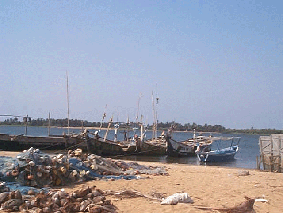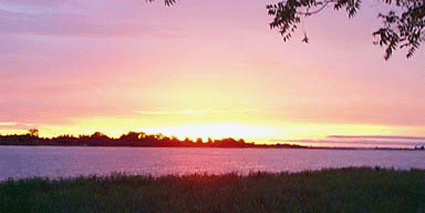
Lagoons
The Keta lagoon is the most important lagoon in the Keta District. It is the largest of its kind in Ghana, measuring 40 by 8 kilometers. It has many creeks. Its fresh and brackish water contains fishes like tilapia, mudfish, and a variety of grabs and shrimps. Other lagoons are the Avu and the Angaw. The Avu Lagoon near Abutor is the home of several bird species both resident and migratory. An almost abandoned, forested area along the lagoon known as Avu Kodzi provide sanctuary for several animal species. Quite recently, the sitatunga has been discovered there. Sitatunga is a rare type of antelope which lives mostly in fresh water areas. It is the only known type of aquatic antelope. These lagoons along with their catchment areas and the coastal wetlands of southeaster Ghana have been designated Ramar sites, to conserve the large population of migratory and resident birds as well as marine turtles.

Fisher boats
Beaches
The Keta District has some of the beast beaches along the Atlantic coastline starting from Aflao through Denu and Xedzranawo. The sea as usual is quite dangerous but there are a few areas where swimming could be safe. This should be checked with the local chiefs, the police or the village head teacher.
|
Keta's beach |
Volta River village |
The Volta River
The lower part of River Volta flows through Sogakofe district. The river is extremely rich in fish such as tilapia and fresh water oyster (clam), and prawns. Quite recently, the bloated body of a manatee or sea cow was found around Sogakofe. The river offers opportunity for a variety of water aports, fishing, speed boating, and wind surfing. Passenger boats plying between Akuse -near Akosombo dam- and Ada Foah at the Volta estuary.

Volta sunset